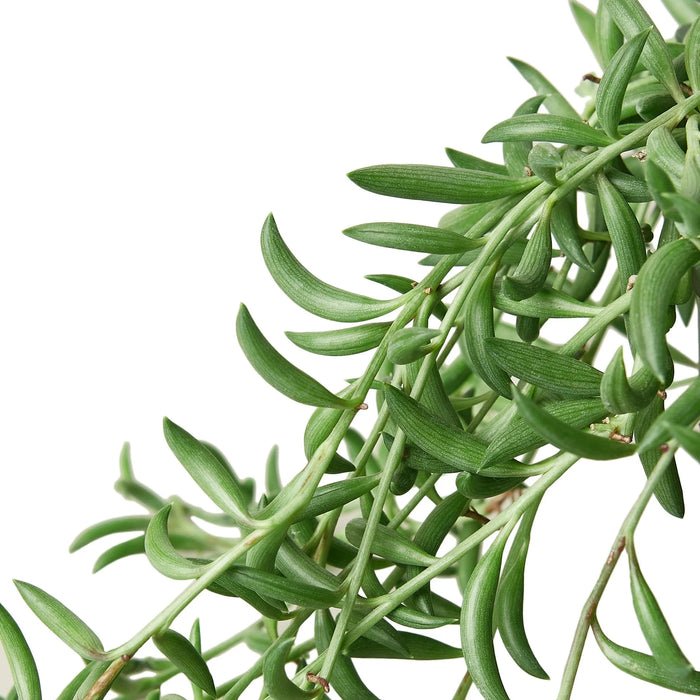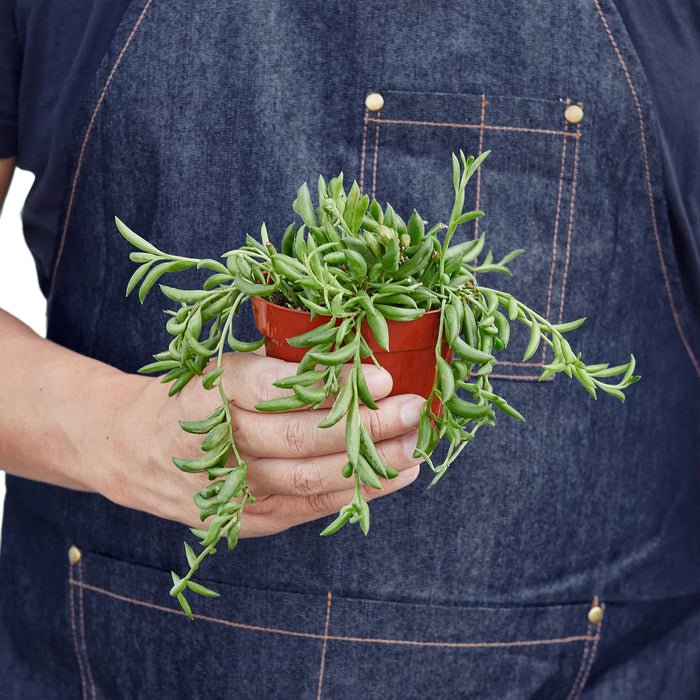Plant Spotlight of the Week: String of Bananas
String of bananas (Epipremnum aureum) is a popular houseplant that is known for its long, trailing vines and bright green leaves. It is a relatively low-maintenance plant that can thrive in a variety of conditions, making it a great choice for beginners. String of bananas is a member of the Araceae family, which also includes philodendrons and monsteras. It is native to tropical rainforests in Southeast Asia, where it grows on trees as an epiphyte. As an epiphyte, a string of bananas does not need soil to grow; instead, it uses its aerial roots to attach to the bark of trees and absorb moisture and nutrients from the air and rain.
String of bananas is a fast-growing plant that can reach lengths of up to 6 feet. Its vines are slender and flexible, and they are covered with small, heart-shaped leaves. The leaves are bright green in color, and they have a waxy sheen.
Being a relatively low-maintenance plant, it does not require a lot of water or fertilizer, and can tolerate a wide range of temperatures. However, it is important to provide a string of bananas with bright, indirect light (think filtered light). If the plant does not receive enough light, its leaves will become pale and leggy.
Care Tips:
Light: String of bananas prefers bright, indirect light. Too much direct sunlight can scorch the leaves, while too little light will cause the leaves to become pale and leggy.
Water: String of bananas should be watered when the soil is dry to the touch. Overwatering can cause root rot, while underwatering can cause the leaves to wilt.
Temperature: String of bananas prefers warm temperatures between 65 and 85 degrees Fahrenheit. It can tolerate some cold, but should not be exposed to temperatures below 50 degrees Fahrenheit.
Humidity: String of bananas appreciates high humidity, but can tolerate lower humidity levels. Misting the leaves regularly or placing the plant on a pebble tray filled with water can help to increase humidity.
Fertilizer: String of bananas should be fertilized once a month during the growing season. Use a balanced fertilizer diluted to half strength.
Propagation: String of bananas can be propagated by cuttings. To take a cutting, simply snip off a healthy stem with a few leaves. Allow the cutting to dry for a few days before planting it in moist soil.
Pests and Diseases:
String of bananas is not susceptible to many pests or diseases. However, it can be affected by mealybugs and spider mites. If you notice any pests, treat them with a neem oil or insecticidal soap solution. String of bananas can be pruned to control its growth and shape.If the leaves are turning yellow, it may be a sign of overwatering or under-watering. Leaves starting curl? It may be a sign of too much sun or not enough water. Pet owners beware! These guys are toxic to cats and dogs.
String of bananas is a beautiful and easy-to-care-for houseplant. With proper care, it can thrive for many years.



